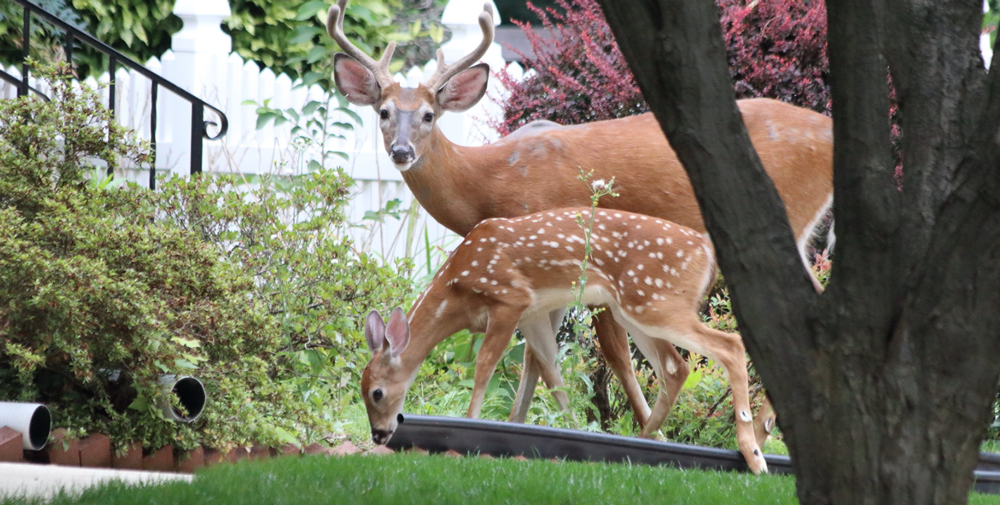
Gardening in areas populated by deer can be challenging. While these graceful creatures are a delight to observe, they can wreak havoc on your carefully curated garden. The key to a thriving garden in deer-prone areas lies in selecting plants that are less appealing to them.
Understanding Deer Damage Ratings
Plants for Heavy Deer Populations (Ratings A and B)
Rating A Plants: Rarely Damaged
| Plant Name | Description | Sun Requirements | Height | Spacing | Bloom Season | Hardiness Zones |
|---|---|---|---|---|---|---|
| Ageratum | Annual with fluffy blue flowers | Full sun to part shade | 6-24" | 6-12" | Summer-Fall | 10-11 |
| American Holly | Native evergreen with red berries | Full sun to part shade | 15-50' | 15-20' | Spring | 5-9 |
| Anise Hyssop | Fragrant purple flower spikes | Full sun | 2-4' | 18-24" | Summer | 4-10 |
| Barberry | Thorny shrubs, vibrant foliage | Full sun to part shade | 2-6' | 3-4' | Spring | 4-8 |
| Bleeding Heart | Heart-shaped flowers | Part to full shade | 2-3' | 2-3' | Spring | 3-9 |
| Catmint | Aromatic lavender-blue flowers | Full sun to part shade | 12-24" | 18-24" | Summer | 3-8 |
| Daffodil | Toxic to deer; yellow blooms | Full sun to part shade | 6-24" | 4-6" | Spring | 3-9 |
| Lamb's Ear | Soft, fuzzy silver leaves | Full sun to part shade | 12-18" | 18-24" | Summer | 4-7 |
| Russian Sage | Silver foliage, purple spikes | Full sun | 3-5' | 24-36" | Summer-Fall | 4-9 |
| Yucca | Sharp leaves, white flower spikes | Full sun | 2-4' | 24-36" | Summer | 4-10 |
Rating B Plants: Seldom Severely Damaged
| Plant Name | Description | Sun Requirements | Height | Spacing | Bloom Season | Hardiness Zones |
|---|---|---|---|---|---|---|
| Astilbe | Feathery plumes | Part to full shade | 1-3' | 18-24" | Summer | 4-9 |
| Butterfly Bush | Attracts pollinators | Full sun | 5-10' | 4-6' | Summer-Fall | 5-9 |
| Columbine | Multi-colored blooms | Full sun to part shade | 1-3' | 12-18" | Spring | 3-9 |
| Daylily | Trumpet-shaped flowers | Full sun to part shade | 1-3' | 18-24" | Summer | 3-9 |
| Lavender | Fragrant herb | Full sun | 2-3' | 24-36" | Summer | 5-9 |
| Marigold | Pungent annual | Full sun | 6-36" | 8-12" | Summer-Fall | Annual |
| Peony | Large, lush blooms | Full sun to part shade | 2-3' | 24-36" | Spring | 3-8 |
| Sage | Culinary herb | Full sun | 18-24" | 18-24" | Summer | 4-8 |
| Snapdragon | Pollinator favorite | Full sun | 6-36" | 6-12" | Spring-Fall | Annual |
| Yarrow | Fern-like foliage | Full sun | 2-4' | 18-24" | Summer | 3-9 |
Regional Considerations
Deer resistance can vary by region due to:
- Local deer population density
- Available food sources
- Seasonal changes
- Regional deer preferences
Maintenance Tips by Plant Type
Perennials (e.g., Daylily, Yarrow)
Divide every 3-4 years
Cut back dead foliage in late fall
Mulch for winter protection
Shrubs (e.g., Barberry, Butterfly Bush)
Prune in early spring
Apply slow-release fertilizer annually
Check for winter damage
Herbs (e.g., Lavender, Sage)
Trim after flowering
Avoid over-watering
Protect from winter winds
Bulbs (e.g., Daffodil)
- Plant in fall
- Allow foliage to die back naturally
- Divide when overcrowded
Creating a Deer-Resistant Garden Design
Layer Your Defense
Outer Layer: Plant thorny or strong-scented plants (Barberry, Lavender)
Middle Layer: Mix resistant perennials (Russian Sage, Yarrow)
Inner Layer: Place more vulnerable plants closer to buildings
Companion Planting Strategies
Surround vulnerable plants with deer-resistant species
Use aromatic herbs throughout the garden
Create dense plantings to discourage browsing
Tips for Success
Monitor Seasonal Changes: Deer feeding habits vary by season
Maintain Regular Care: Healthy plants better resist damage
Use Multiple Deterrent Methods:
Physical barriers
Motion-activated sprinklers
- Deer repellents
- Adapt to Local Conditions: What works in one area may not work in another
Troubleshooting Common Issues
- New Growth Damage: Protect tender spring growth with temporary fencing
- Winter Browsing: Use winter protection for evergreens
- Night Feeding: Consider motion-activated deterrents
- Persistent Damage: Evaluate and adjust plant placement
Final Considerations
Creating a deer-resistant garden requires careful planning and plant selection. Focus on:
- Choosing appropriate plants for your deer pressure level
- Implementing multiple layers of protection
- Regular maintenance and monitoring
- Adapting strategies based on results
Remember that no plant is completely "deer-proof," but with proper planning and plant selection, you can create a beautiful, resilient garden even in areas with high deer activity.
































































































































































































































































































































































































































































































































































































































































